Abstract Expressionism in the United States emerged as a distinct art movement in the immediate aftermath of World War II and gained mainstream acceptance in the 1950s, a shift from the American social realism of the 1930s influenced by the Great Depression and Mexican muralists. The term was first applied to American art in 1946 by the art critic Robert Coates. Key figures in the New York School, which was the epicenter of this movement, included such artists as Jackson Pollock, Franz Kline, Mark Rothko, Norman Lewis, Willem de Kooning and Theodoros Stamos among others.
Action painting, sometimes called "gestural abstraction", is a style of painting in which paint is spontaneously dribbled, splashed or smeared onto the canvas, rather than being carefully applied. The resulting work often emphasizes the physical act of painting itself as an essential aspect of the finished work or concern of its artist.

Willem de Kooning was a Dutch-American abstract expressionist artist. He was born in Rotterdam and moved to the United States in 1926, becoming an American citizen in 1962. In 1943, he married painter Elaine Fried.
The New York School was an informal group of American poets, painters, dancers, and musicians active in the 1950s and 1960s in New York City. They often drew inspiration from surrealism and the contemporary avant-garde art movements, in particular action painting, abstract expressionism, jazz, improvisational theater, experimental music, and the interaction of friends in the New York City art world's vanguard circle.

Franz Kline was an American painter. He is associated with the Abstract Expressionist movement of the 1940s and 1950s. Kline, along with other action painters like Jackson Pollock, Willem de Kooning, Robert Motherwell, John Ferren, and Lee Krasner, as well as local poets, dancers, and musicians came to be known as the informal group, the New York School. Although he explored the same innovations to painting as the other artists in this group, Kline's work is distinct in itself and has been revered since the 1950s.

Elaine Marie Catherine de Kooning was an Abstract Expressionist and Figurative Expressionist painter in the post-World War II era. She wrote extensively on the art of the period and was an editorial associate for Art News magazine.
Robert Motherwell was an American abstract expressionist painter, printmaker, and editor of The Dada Painters and Poets: an Anthology. He was one of the youngest of the New York School, which also included Willem de Kooning, Jackson Pollock, and Mark Rothko.
Gilles Larrain is a French-American photographer who believes photography is a way to "capture the landscape of the soul of a person". By taking a unique approach to photography, which includes creating his own lighting, managing the entire darkroom process, and always having subjects come to his personal studio space, Larrain has created acclaimed pieces of art since 1969. In 1973, Larrain published the highly successful photographic book, Idols, which presented portraits of transvestites. Two generations later, the book inspired American photographer Ryan McGinley who wrote an April 2010 article in Vice, which identified Larrain and the book Idols as one of his early and biggest influences for experimenting with colors, casting, and props, because all of Larrain's images in the book are raw without any manipulation. Larrain has photographed notable personalities in a wide range of creative disciplines, including the dancers of the American Ballet Theatre, Mikhail Baryshnikov, Salvador Dalí, Miles Davis, Sting, Billy Joel, Roberto Rossellini, Norman Mailer, and more.

Joan Mitchell was an American artist who worked primarily in painting and printmaking, and also used pastel and made other works on paper. She was an active participant in the New York School of artists in the 1950s. A native of Chicago, she is associated with the American abstract expressionist movement, even though she lived in France for much of her career.

Albert Kotin belonged to the early generation of New York School Abstract Expressionist artists whose artistic innovation by the 1950s had been recognized across the Atlantic, including in Paris. The New York School Abstract Expressionism, represented by Jackson Pollock, Willem de Kooning, Franz Kline, and others became a leading art movement of the post-World War II era.
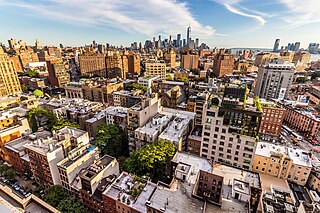
The 9th Street Art Exhibition of Paintings and Sculpture is the official title artist Franz Kline hand-lettered onto the poster he designed for the Ninth Street Show. Now considered historic, the artist-led exhibition marked the formal debut of Abstract Expressionism, and the first American art movement with international influence. The School of Paris, long the headquarters of the global art market, typically launched new movements, so there was both financial and cultural fall-out when all the excitement was suddenly emanating from New York. The postwar New York avant-garde, artists like Willem de Kooning and Jackson Pollock, would soon become "art stars," commanding large sums and international attention. The Ninth Street Show marked their "stepping-out," and that of nearly 75 other artists, including Harry Jackson, Helen Frankenthaler, Michael Goldberg, Joan Mitchell, Grace Hartigan, Robert De Niro Sr., John Ferren, Philip Guston, Elaine de Kooning, Lee Krasner, Franz Kline, Ad Reinhardt, David Smith, Milton Resnick, Joop Sanders, Robert Motherwell, Barnett Newman, and many others who were then mostly unknown to an art establishment that ignored experimental art without a ready market.

Esteban Vicente Pérez was a Spanish American painter born in Turégano, Spain. He was one of the first generation of New York School abstract expressionists. He identified as an antifascist.

Joop Sanders was a Dutch-American painter, educator, and founding member of the American Abstract Expressionist group. He was the youngest member of the first generation of the New York School.

20th-century Western painting begins with the heritage of late-19th-century painters Vincent van Gogh, Paul Cézanne, Paul Gauguin, Georges Seurat, Henri de Toulouse-Lautrec, and others who were essential for the development of modern art. At the beginning of the 20th century, Henri Matisse and several other young artists including the pre-cubist Georges Braque, André Derain, Raoul Dufy and Maurice de Vlaminck, revolutionized the Paris art world with "wild", multi-colored, expressive landscapes and figure paintings that the critics called Fauvism. Matisse's second version of The Dance signified a key point in his career and in the development of modern painting. It reflected Matisse's incipient fascination with primitive art: the intense warm color of the figures against the cool blue-green background and the rhythmical succession of the dancing nudes convey the feelings of emotional liberation and hedonism.
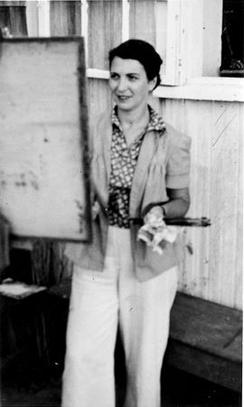
Perle Fine (1905–1988) was an American Abstract expressionist painter. Fine's work was most known by its combination of fluid and brushy rendering of the materials and the use of biomorphic forms encased and intertwined with irregular geometric shapes.
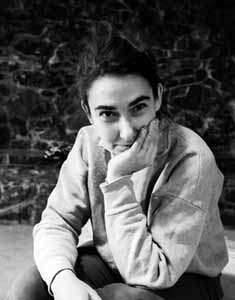
Pat Passlof was an American abstract expressionist painter.

Fausto Olivares Palacios (1940–1995) was an Andalusian painter born in Jaén. He studied Fine Arts in Madrid. He traveled to Paris and other cities in Europe before returning to Jaén in 1966, where he taught drawing and painting at the School of Arts and Crafts, where he served later as director.
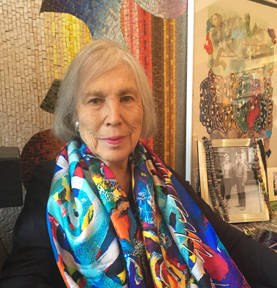
Amaranth Roslyn Ehrenhalt was an American painter, sculptor, and writer, who spent the majority of her career living and working in Paris, France before returning to New York City.

Woman VI is a 1953 abstract work of art painted by Willem de Kooning and first displayed at the Sidney Janis Gallery in Manhattan. Since the 1955 Carnegie International Exhibition, Woman VI has been on view at the Carnegie Museum of Art as part of the Postwar Abstraction collection. The Woman paintings of the early 1950s are widely considered to be de Kooning’s most important works for their significance to postwar American cultural history and social events, such as the mid-century Feminist Movements. Many of the paintings are speculated to be abstracted portraits of Marilyn Monroe. Woman VI is notable within the series for its brighter palette of green and red paint employed in larger fields of color.
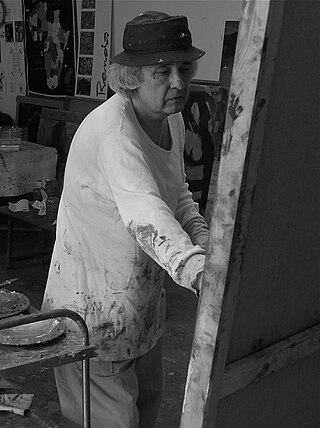
Jorge Rando is a Spanish painter and sculptor, considered one of the most recognised artist of the Neo-expressionist art movement. A world class study of key figures of Expressionism and Neo-expressionism, from the Museum of Modern Art in Salzburg, identified Rando as one of the best advocates of neo-expressionism in the world. The expert study selected Rando and Miguel Barceló as the only two representatives of this artistic movement in Spain. Therefore, in recognition of Rando's fruitful artistic career, the first Expressionist museum in Spain, inaugurated in Málaga in 2014, bears his name Museum Jorge Rando. Currently, the painter lives and works between Málaga, Spain and Hamburg, Germany.














